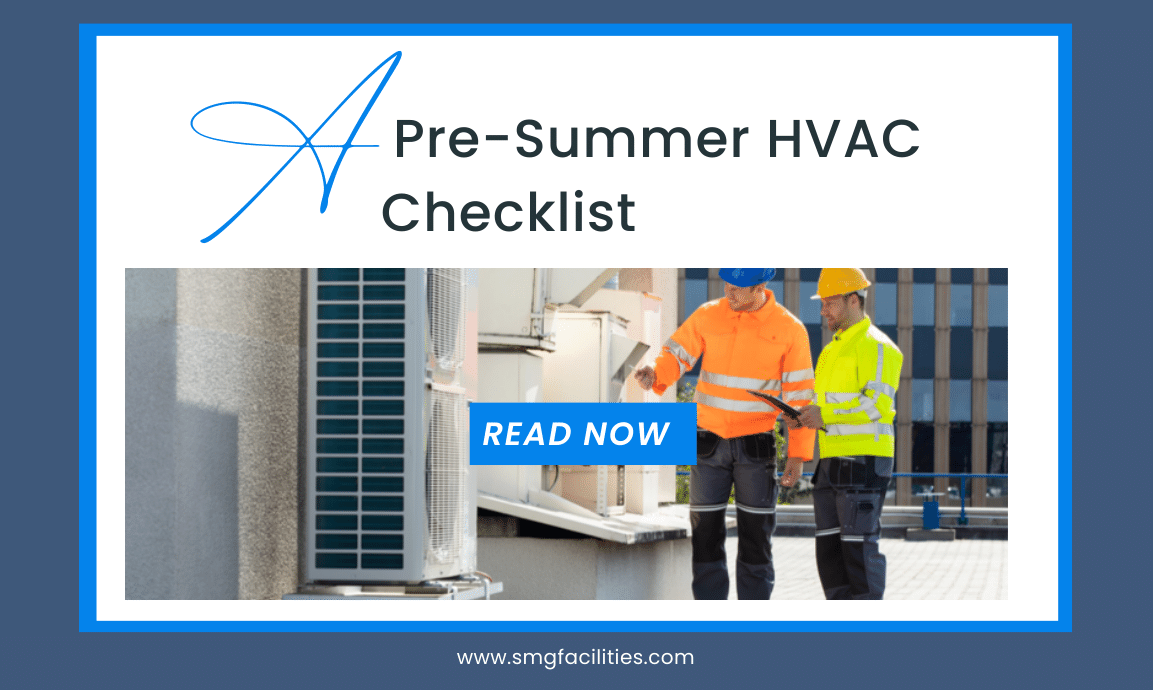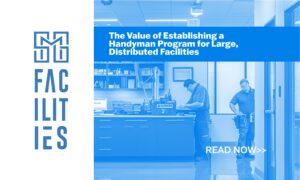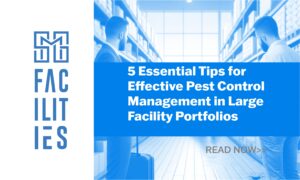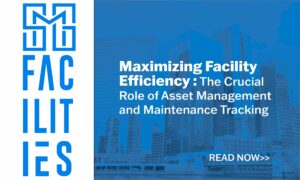As the summer months fast approach, it is critical to ensure your HVAC systems remain in good working order and can handle the season’s heat. These systems consume more energy than nearly any other item in a commercial building. Having a proactive maintenance strategy and HVAC checklist is a must.
A commercial HVAC PM checklist that covers all aspects of preventative maintenance and upkeep helps keep you organized and prevents future damage to your unit. According to ABC.com, NOAA drought predictions for 2022 are looking dismal, especially in the southwestern region of the U.S., Your commercial HVAC systems must be in prime condition to handle the upcoming changes in even normal temperature fluctuations.
Local service providers may be more knowledgeable of the climate in your area, so be sure to research local vs. national providers.HVAC checklists are an essential part of the puzzle and industry pros will have more familiarity with the environment in your area. Below are ways to kickstart proactive maintenance for your commercial buildings:
1. Clean and Replace All Filters
A dirty air filter is not only unhealthy, it can destroy an HVAC system by restricting the airflow. Changing the filter every three months will allow for efficient cooling and free-flowing air. Performing this simple yet often overlooked task on the HVAC checklist will extend the system’s life and keep it operational.
2. Air Duct Cleaning
Ducts are a considerable component of an HVAC system and an essential item on the commercial HVAC PM checklist. It transfers air from the unit to the building. When ducts are clogged, dirty air spreads throughout the commercial space. Ducts become clogged due to years of use and clogged air filters and can experience a decrease in performance.
3. Check the Thermostat
There are countless challenges faced in managing distributed facilities and the thermostat can be one of the most difficult to maintain. Even if a energy management system (EMS) is deployed, thermostat can still be overwritten and the established or pre-programmed settings that were meant to reduced energy usage can be changed. Ensuring that the thermostat is appropriately set means that all units receive even air distribution and don’t get burned out.
4. Adjust System Settings
System settings will need to be modified if the thermostat has been adjusted or changed in terms of its settings at all. Have a technician check to ensure that settings are set optimally for your system to run efficiently and for your building to get more from your budget. Without a solid foundation and starting point, it can be impossible to manage your HVAC system efficiently.
5. Remove Debris From Exterior Units.
Wearing protection, clear any debris from the outside units. Any blockage can affect the functionality of the system and can cause poor air quality levels and even increase fire risks on site. This HVAC checklist item can prevent the system from overheating and overworking to save your time and money on repairs and maintenance.
6. Inspect All Belts and Pulleys.
These types of items are a critical part of HVAC systems that often slip, dislocate, or wear down, just like a vehicle. Check to ensure they are placed correctly and aren’t showing signs of wear and tear. If cracks are present, replace them with new belts or pulleys, and any signs of damage cannot be overlooked or ignored.
7. Charge the Refrigerant
If the refrigerant is low, this could indicate a leak. If a leak is present, it will need to be repaired, and the refrigerant needs to be replaced. This HVAC checklist item should not be overlooked, as running the system without enough coolant will damage the system.
8. Check Condensation Lines and Drains for Debris/Blockage.
All heating and cooling systems create condensation. This HVAC checklist item needs to be checked routinely for optimal performance. If drains have overflown into drain pans, empty the drain pans and inspect the lines for clogs or blockage.
9. Check Fan, Airflow, Blades, and Motors.
Ensure that all blades, fans, motors, and airflow work smoothly. Often, these parts can slow down over time and need attention. Lubricate all moving components regularly and make sure they are inspected and maintained as part of usual HVAC system maintenance.
10. Clean All Evaporator Coils and Condensers.
Coils and condensers accumulate dirt and debris after running day in and day out, which requires cleaning. Clogged condensers can cause units to freeze over and stop performing. Regular cleaning will prevent pressure on the system and reduce the risk of commercial property damage.
Complete Your HVAC Checklist Needs by Partnering With SMG Facilities.
Creating and completing an HVAC checklist can be time-consuming and stressful. Some preparation is required to prepare your system for the upcoming hotter season. You can keep your business cool and pleasant throughout the summer by following simple procedures. Contact SMG Facilities for your custom fit plan today!





